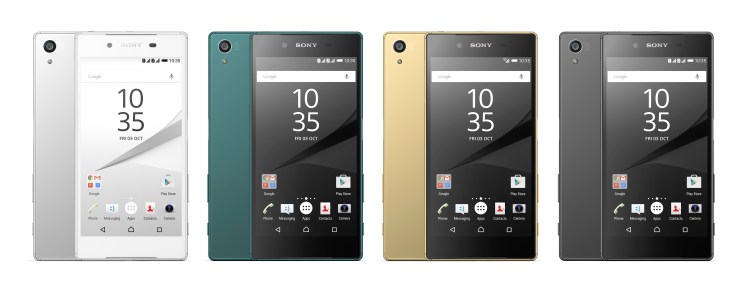Sony’s Xperia Z5 Premium is claiming the title of the world’s first 4K resolution smartphone.
The phone, which boasts a 5.5-inch 4K UHD (3840-by-2160) screen, at 806 PPI (pixels-per-inch), is essentially party-crashing the 4K handheld market, one that Sony hopes to capture just by being first to enter. But it doesn’t matter if you are early to a party if nobody else shows up.
Take a second and look at whatever your phone model of choice is that you are carrying around. Even when you are watching content on it, it’s probably held pretty close to your face (or at least closer than when you are watching TV or at the movies), and you aren’t really going to be immersed in the experience like you would be on a large screen. Chances are the device already takes pictures of a higher quality than you need in your daily life — and that probably applies for video, too. Sony is flashing “bigger, brighter, and more pixels” in people’s faces and hoping that consumers will decide that the device is something they, without a doubt, will not be able to live without.
For televisions, 4K makes sense, as long as you have content that was actually made for that resolution. If you are sitting and watching a movie on a giant screen, every little detail and pixel counts. The Z5 Premium does allow you to stream your 4K content you’ve created with your phone to a 4K TV (wirelessly via DLNA or with MHL 3.0), which suggests that even Sony knows that the more important battleground for 4K is the living room, not the smartphone. It also means that you’ll need to get a 4K TV if you want to fully use this feature. More upgrading! Sony wants you to buy into its ecosystem, just the same it wants you to buy into 4K.
Even laptops and computers can benefit the extra resolution. But just because we can have 4K on our little handheld devices doesn’t mean that we need it. It’s silly. Things are getting a bit ridiculous and out of hand when our phones have more pixels than our TV sets.
I’d wager that most people (read: probably all people) wouldn’t even be able to tell the difference between 1080p and 4K on a screen that small, and even if they could, it isn’t a necessity for most phone use. It isn’t like it drastically changes the way people interact with their device. Most content out there still isn’t in 4K, and having a phone that can display it isn’t that useful in a world where you aren’t going to be able to use it that often … at least yet.
Real talk: Most people probably don’t really want their Snapchats to be 4K. For most consumer’s smartphone video and photo needs, it’s ultimately an unnecessary increase and one that also — at least for the Z5 Premium — is happening piecemeal. The phone only displays 4k with photo and video content. Everything else is stuck at the oh-so-yesterday’s-news 1080p, which means that most of the time your phone isn’t even actually going to be displaying at 4K. If Sony isn’t even making a full commitment to the resolution, it shouldn’t expect its consumer to do the same.
At least Sony can say it was first. It’s a nifty little marketing jingle to claim to have the first 4K phone. But mostly this really seems to be a case of Sony rushing to the punch of claiming it has the first 4K phone before anybody else, and hoping that people who want to have that next big thing just because it is the next big thing will jump on it.
But if all Sony wants to do is win the award for having the world’s first 4K smart phone, it has succeeded. It won a race … even if it was the only one running in a race that hasn’t started yet.


